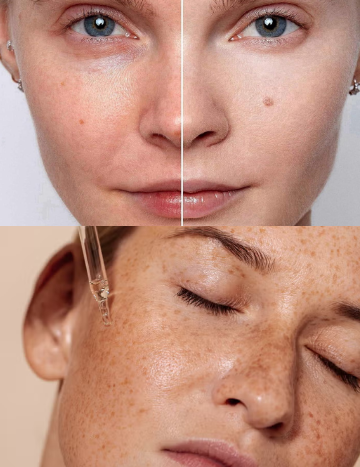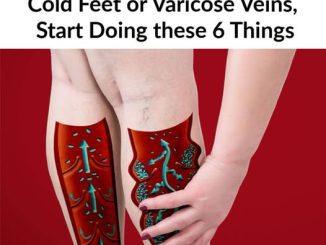
When it comes to skincare, few ingredients have gained as much recognition as Hyaluronic Acid (HA). From high-end serums to everyday moisturizers, HA has become a non-negotiable in modern beauty routines. Why? Because it’s one of the most effective ways to hydrate, plump, and rejuvenate the skin. If you’re curious about how Hyaluronic Acid works, why it’s considered a skincare superstar, and how you should be using it, this guide breaks it all down for you.
What Exactly Is Hyaluronic Acid?
Hyaluronic Acid, also known as hyaluronan, is a naturally occurring substance found throughout the human body—in connective tissues, eyes, and skin. Its primary function is to retain moisture, acting like a sponge that binds water to cells. In fact, one gram of HA can hold up to a liter of water.
But here’s the catch: as we age, our natural levels of HA decline. By the time we’re in our 70s, we have only about a quarter of what we had in our teenage years. This decrease leads to dryness, fine lines, and loss of firmness. That’s where topical HA steps in, restoring moisture and helping the skin regain its youthful bounce.
When Did Hyaluronic Acid Enter the Beauty World?
Although HA was discovered in 1934, it wasn’t until the mid-20th century that scientists began using it in medical and cosmetic formulations. By 1942, HA was being produced at a commercial level, and decades later, it became a staple in skincare. Today, it’s impossible to walk down a beauty aisle without spotting serums, creams, and masks that proudly list Hyaluronic Acid as a star ingredient.
The Different Types of Hyaluronic Acid
Not all HA is created equal. Depending on the molecular weight, Hyaluronic Acid penetrates and performs differently on the skin.
- Raw Form (High Molecular Weight) – Stays on the surface, locking in moisture and creating a protective barrier.
- Hydrolyzed Form – Broken into smaller fragments, it offers moderate penetration and hydration.
- Sodium Hyaluronate (Alkaline Form) – With a low molecular weight, it penetrates deeper and stimulates the skin’s natural HA production.
- Cross-Linked Form – A newer variant where HA molecules are linked together, creating longer-lasting hydration benefits.
This variety is why many advanced formulations now use blends of multiple HA types for both immediate and long-term results.
How Does Hyaluronic Acid Work on the Skin?
Think of HA as a magnet for moisture. It draws water from the air or deeper skin layers and holds it in the outer layers of your skin. This adaptability depends on your environment. In high humidity, HA attracts water from the air; in low humidity, it pulls moisture from within your skin.
The result? Plumper, smoother, and more supple skin—instantly. Unlike ingredients that take weeks to show results, HA provides a visible hydration boost right after application.
Video : What you NEED to know about Hyaluronic Acid in Skincare!
Key Benefits of Hyaluronic Acid for the Skin
- Hydration Powerhouse: Instantly boosts hydration and keeps the skin plump and soft.
- Reduces Fine Lines and Wrinkles: Studies show that low molecular weight HA can significantly decrease wrinkles within weeks.
- Improves Elasticity: Consistent use enhances skin firmness and resilience.
- Supports Acne-Prone Skin: By regulating oil (sebum) production, HA can help prevent breakouts over time.
- Soothes Irritation: Because it’s naturally occurring in the body, it’s gentle and safe for sensitive skin.
- Brightens Appearance: While it doesn’t lighten skin directly, restoring hydration helps reduce the look of dullness and dark spots.
Are There Side Effects of Using Hyaluronic Acid?
The good news? Hyaluronic Acid is considered safe for nearly everyone. It’s non-toxic, non-allergenic, and well tolerated across all skin types. Clinical studies consistently report zero side effects. The only precaution is to always perform a patch test when trying a new product, just to rule out irritation from other ingredients in the formula.
Does Hyaluronic Acid Lighten Skin?
No, HA isn’t a bleaching or whitening agent. But it helps repair the skin barrier and restore hydration, which can reduce the appearance of pigmentation and dark spots. In this way, HA creates a brighter, more even-looking complexion over time without altering your natural skin tone.
Who Should Use Hyaluronic Acid?
The beauty of HA is that it’s for everyone. Whether you have oily, dry, combination, or sensitive skin, HA fits seamlessly into your skincare routine. It’s even considered safe during pregnancy, unlike stronger actives such as Retinol.
How to Add Hyaluronic Acid to Your Skincare Routine
HA comes in multiple forms, but the most popular are serums and moisturizers.
- HA Serums: Deliver concentrated hydration directly to the deeper layers of the skin. They work best when applied to damp skin, followed by a moisturizer to seal it in.
- HA Moisturizers: Provide hydration while also strengthening the skin barrier. These are great for daily use and pair well with other actives.
Pro tip: Apply your HA product right after cleansing while your skin is still slightly damp. This maximizes its ability to bind water and keeps your skin glowing throughout the day.
Can Hyaluronic Acid Be Used Daily?
Absolutely! HA is gentle enough for both morning and evening routines. Use it under sunscreen during the day for extra moisture and before your night cream to enhance skin repair while you sleep. Unlike strong actives that require cautious introduction, HA can be used consistently without fear of irritation.
Best Skincare Ingredients to Pair with Hyaluronic Acid
Hyaluronic Acid is like the friendly neighbor who gets along with everyone. It layers beautifully with almost all skincare actives, including:
- Vitamin C (for brightening and antioxidant protection)
- Niacinamide (for balancing skin tone and barrier repair)
- Retinol (to offset dryness and boost anti-aging results)
- AHAs/BHAs (to maintain hydration after exfoliation)
- Peptides and Vitamin E (for enhanced skin repair and protection)
Pairing HA with these ingredients not only ensures hydration but also amplifies the benefits of your entire routine.
Video : DOCTOR V: Does Hyaluronic Acid actually work in skincare? Mistakes made with Hyaluronic acid|
Conclusion
Hyaluronic Acid isn’t just another skincare trend—it’s a science-backed ingredient that delivers results you can see and feel. From locking in hydration to softening fine lines, it’s a versatile and gentle powerhouse that works for all skin types. Whether you’re battling dryness, dullness, or early signs of aging, HA deserves a permanent spot in your skincare lineup. Use it consistently, combine it with complementary ingredients, and let your skin enjoy the glow of deep, lasting hydration.


